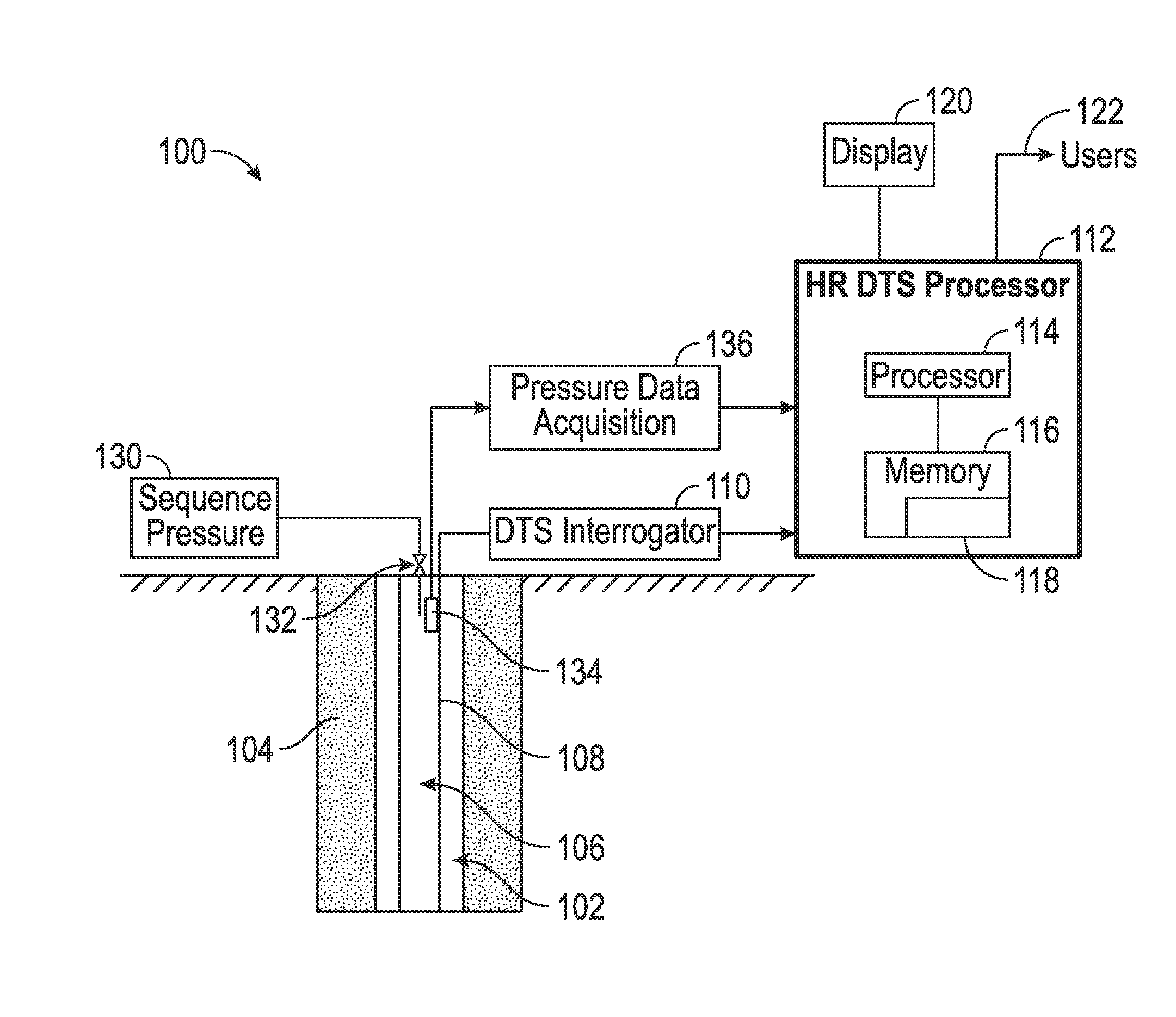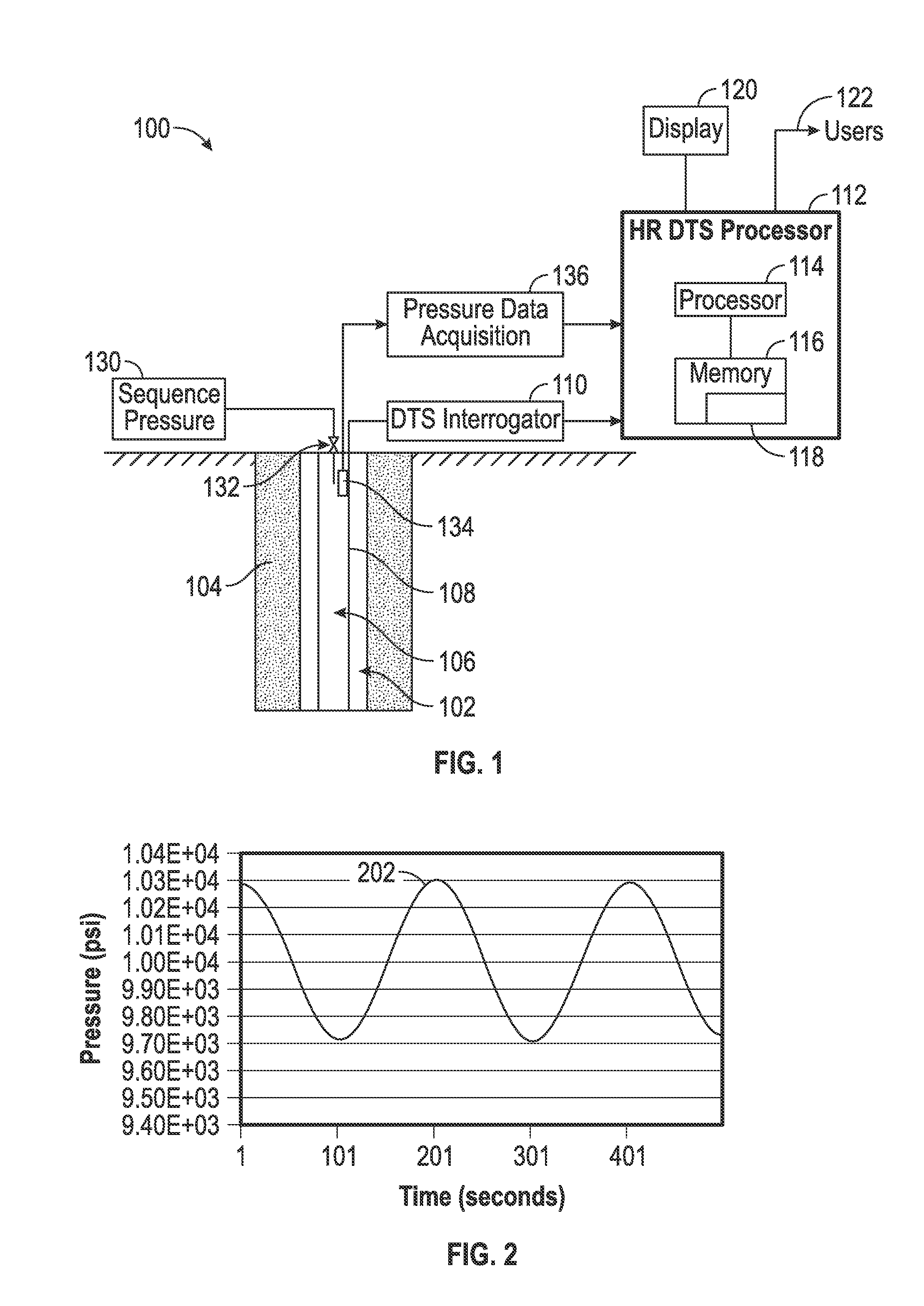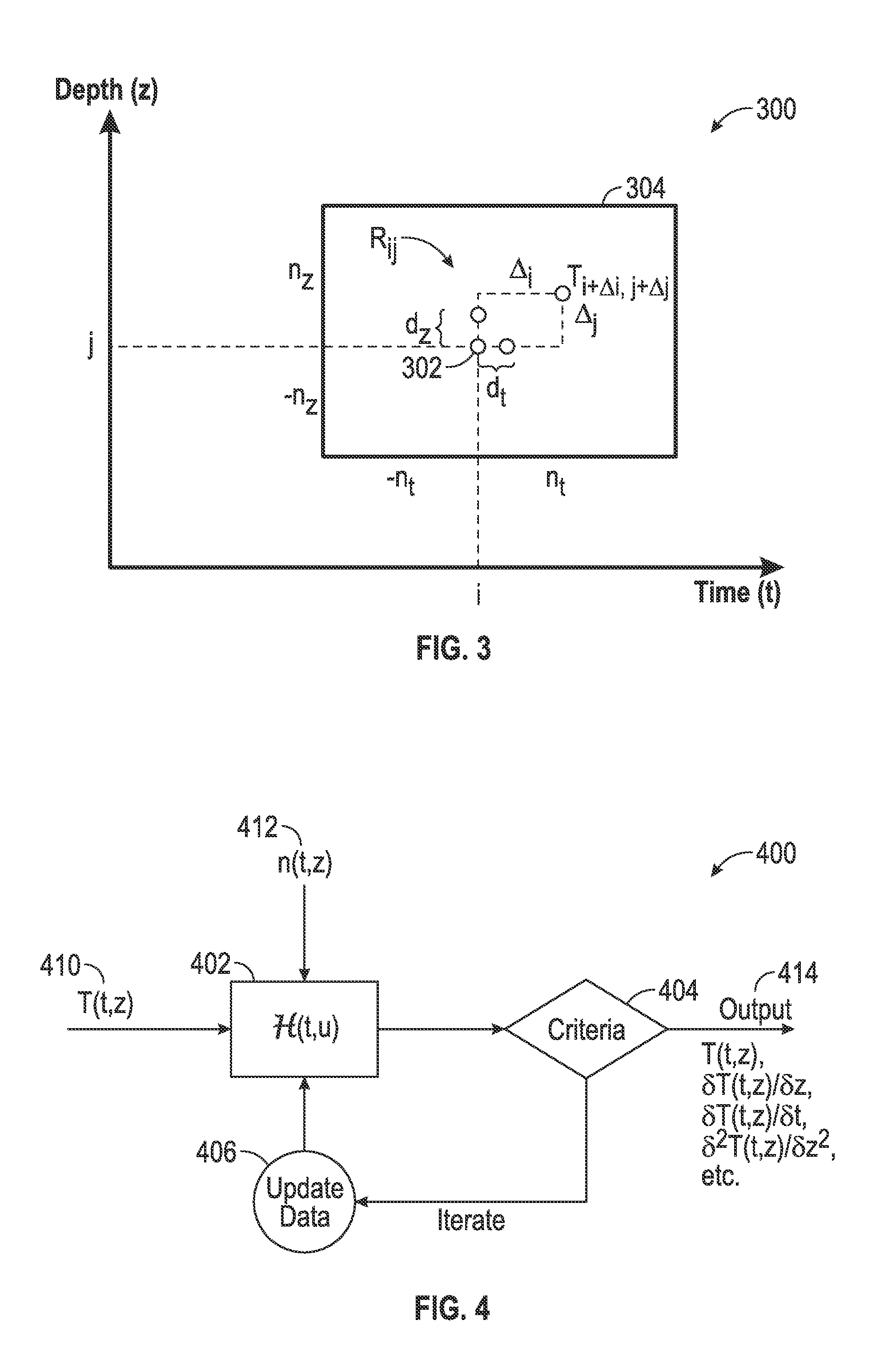Downhole Pressure/Thermal Perturbation Scanning Using High Resolution Distributed Temperature Sensing
a distributed temperature sensing and pressure scanning technology, applied in the field of wellbore scanning, can solve the problems of limited ability of dts systems to detect temperature changes and damage to downhole equipmen
- Summary
- Abstract
- Description
- Claims
- Application Information
AI Technical Summary
Benefits of technology
Problems solved by technology
Method used
Image
Examples
Embodiment Construction
[0017]FIG. 1 shows a suitable system 100 for determining a feature in a wellbore 102 using the methods disclosed herein. The wellbore 102 is formed in a formation 104. A member such as a production tubing 106 may be disposed within the wellbore 102. In alternate embodiments, the member may include a drill string, a completion string, or other tubular string. The wellbore system 100 further includes a distributed temperature sensing (DTS) system that is used to obtain a temperature profile along the wellbore 102 over a selected time interval. The DTS system may include a fiber optic cable 108 that extends downhole, generally from a surface location, a Distributed Temperature Sensing interrogator (DTS interrogator) 110 and a High-Resolution Distributed Temperature Sensing processor (HR DTS processor) 112. In one embodiment, fiber optic cable 108 is disposed in the wellbore 102, generally alongside member 106. The fiber optic cable 108 may be either permanently deployed in the wellbore...
PUM
 Login to View More
Login to View More Abstract
Description
Claims
Application Information
 Login to View More
Login to View More - R&D
- Intellectual Property
- Life Sciences
- Materials
- Tech Scout
- Unparalleled Data Quality
- Higher Quality Content
- 60% Fewer Hallucinations
Browse by: Latest US Patents, China's latest patents, Technical Efficacy Thesaurus, Application Domain, Technology Topic, Popular Technical Reports.
© 2025 PatSnap. All rights reserved.Legal|Privacy policy|Modern Slavery Act Transparency Statement|Sitemap|About US| Contact US: help@patsnap.com



